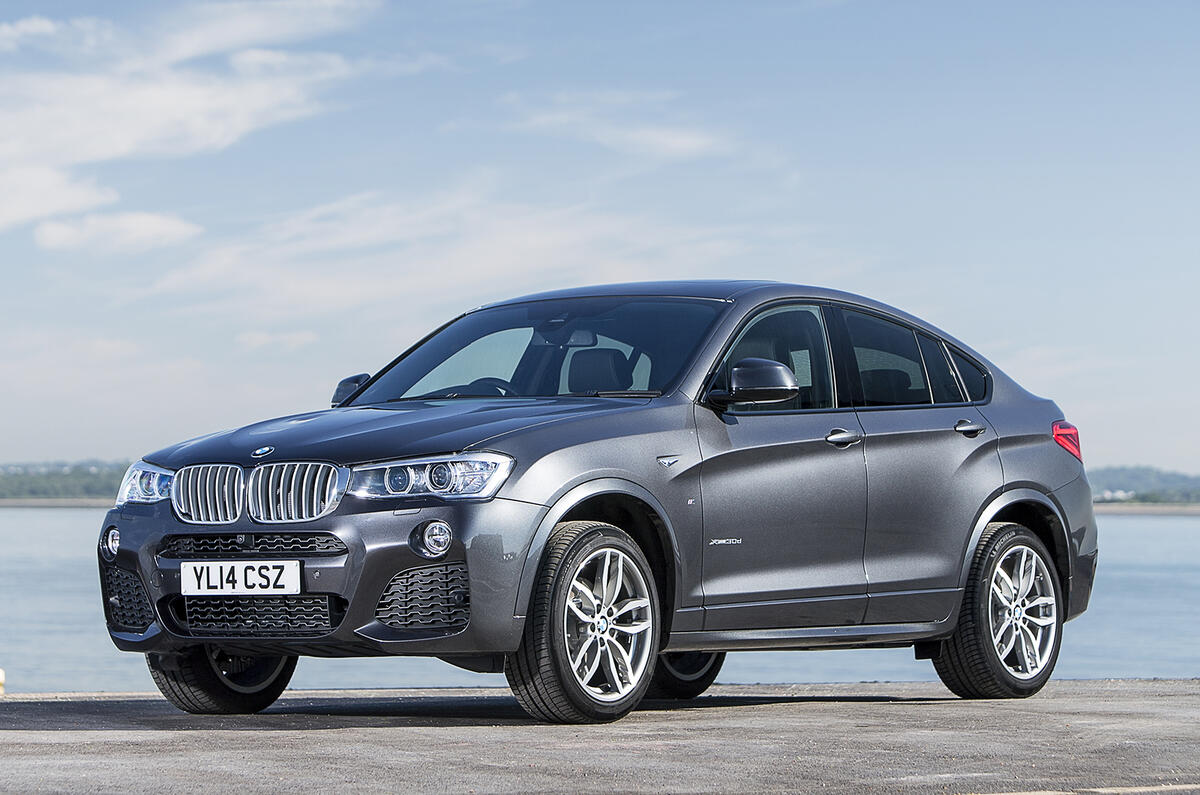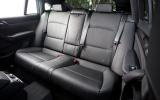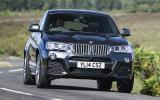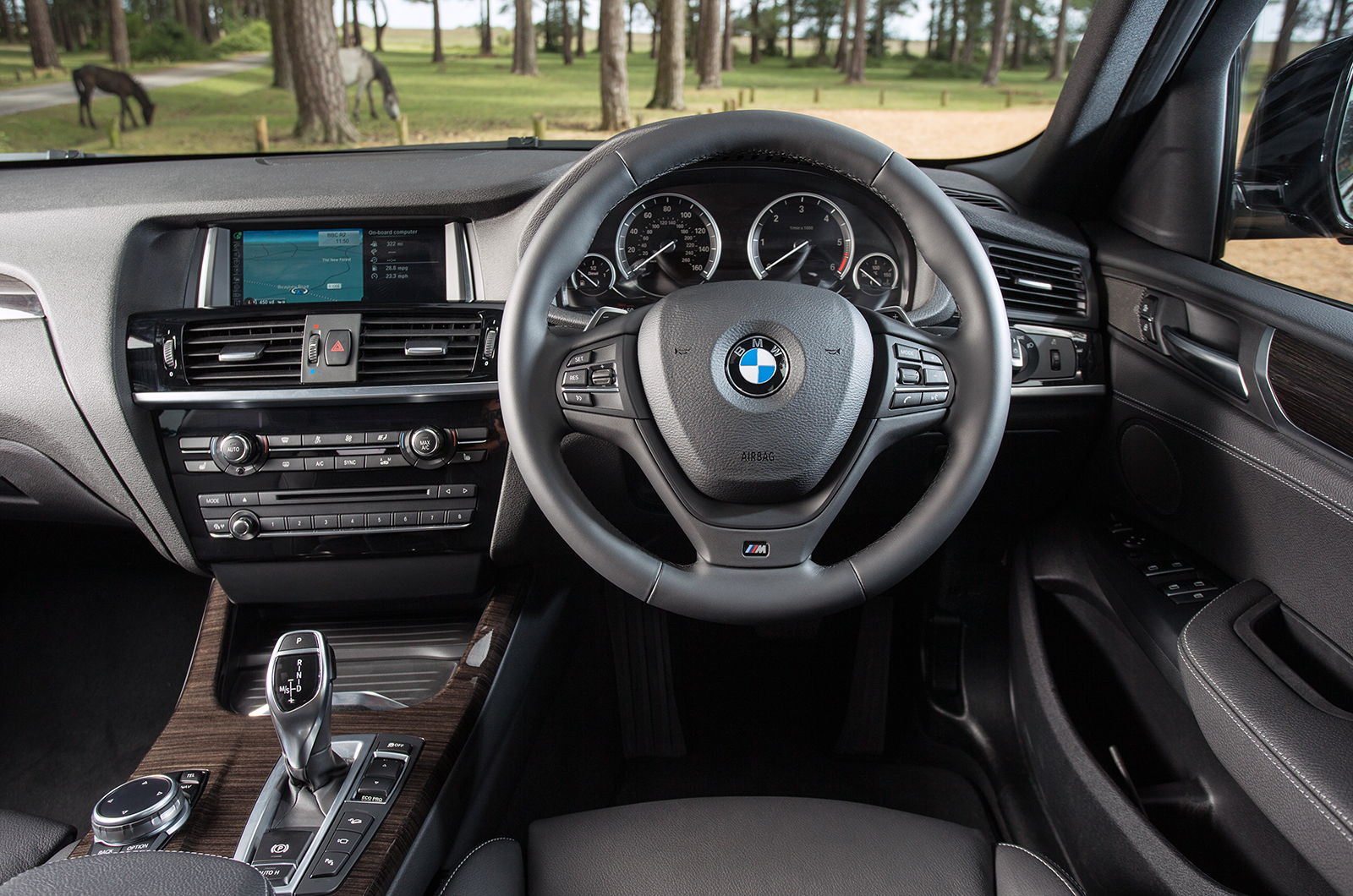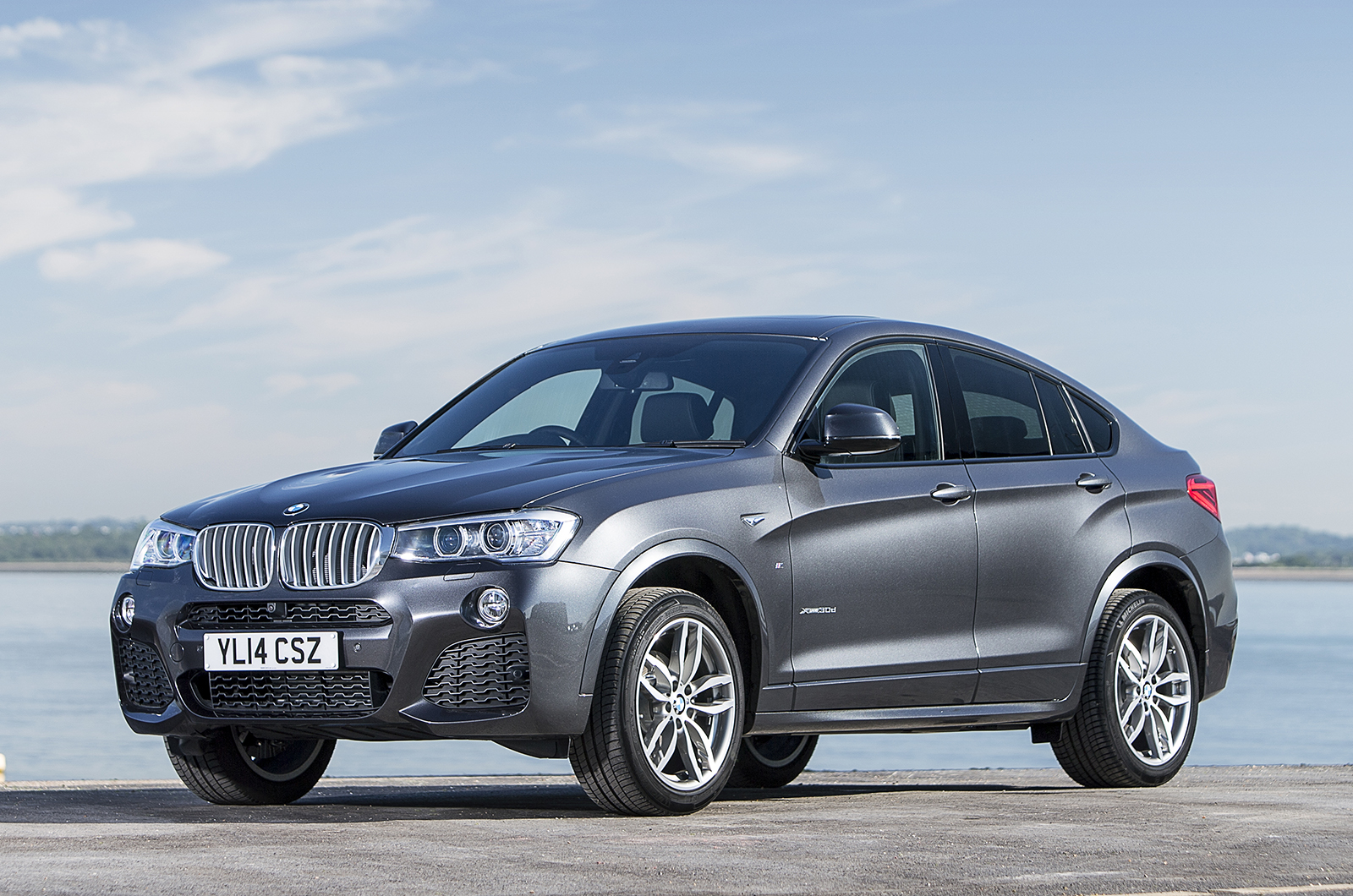Three trim levels are offered, comprising of SE, xLine and M Sport. All are well equipped, with the entry-level SE models featuring dual-zone climate control, cruise control, a DAB tuner, iDrive with sat nav and DAB, Bluetooth, heated seats and all-round parking sensors. Upgrade to an xLine model and you get bigger alloys, chrome detailing, a sports automatic gearbox and front sports seats.
The M Sport trim gets 19in alloys, sports suspension and an aerodynamic bodykit, while the M40i gets a heavily reworked 3.0-litre petrol engine and numerous M Division revisions.
Better to start this from the back, because that’s where the BMW X4’s differences chiefly play out and where we chided the original BMW X6 for being so wasteful with the available space.
Firstly, the X6’s novelty 2+2 configuration has not been revisited. Instead, the new model gets a much more conventional 40:20:40 split folding rear bench that’s equipped to accommodate a third occupant.
Secondly, those in steerage will likely find the imposition of a designer’s pen strokes less noticeable. That plunging roofline still negates some of the headroom that would be available in the BMW X3, but with the ceiling gouged out to good effect, BMW has managed to find a slither of daylight to insert between it and our tallest testers.
The bulky collision of D-pillar and rising shoulder line means that the X4 deals more in bolt-hole shade than SUV airiness, but that much was to be expected.
Likewise, the luggage capacity has been restricted. The huge automatic tailgate yawns open to reveal an appealingly flat, square floor of a boot that holds 50 litres less than that of an BMW X3. Seats down, the difference is 200 litres, making the X4 inferior to a Skoda Yeti in the overall lugging-stuff stakes.
All of which is easy to not give a hoot about when sat up front on your tod. From the driver’s seat, beneath the highest point of the roof arch, the car seems plenty spacious enough and the driving position is more low-slung than in most SUVs.
The gleaming architecture ahead is carried over from the X3, which means that it’s confidently and concertedly premium but not, even in its most expensive garb, particularly luxurious.
The ergonomics, made familiar by steering wheel heft and a stubby gearlever, are fine, as is the view out. Unless, that is, you want to look over your shoulder at what’s beyond the flanks, in which case the rear quarter blind spot is prodigious.
Most of the items that we’d consider essential are included in the now-standard BMW Business Media system, which comes with a 6.5-inch infotainment screen, Bluetooth (including audio streaming), USB interface, satellite navigation and DAB tuner, as well as the iDrive controller to move swiftly and satisfyingly between them.
However, if that lot seems inadequate, rest assured that enhancement is only a tick away. The upgraded Professional nav system (£900), which among other things — notably, real-time traffic information — delivers the larger display that properly fills out the screen-shaped hole in the X4’s dashboard.
The head-up display costs another £895 but BMW’s line-of-sight presentation is exemplary. A Harman Kardon surround-sound speaker system clocks in at the same price.


















